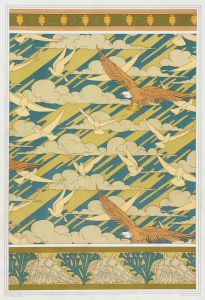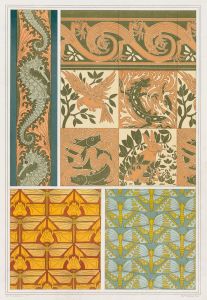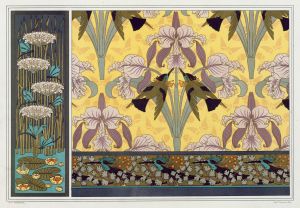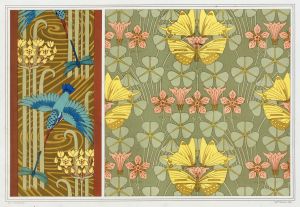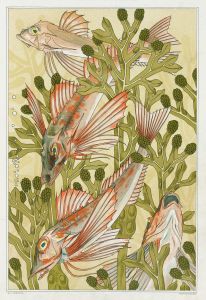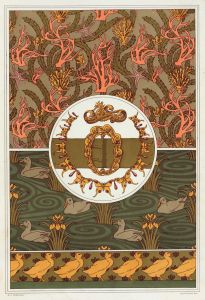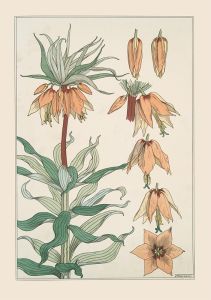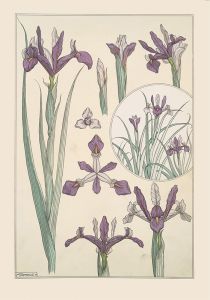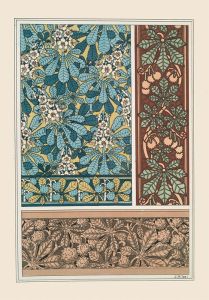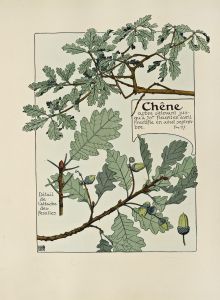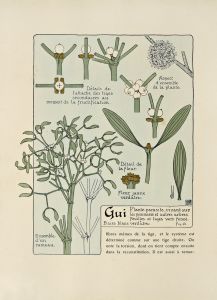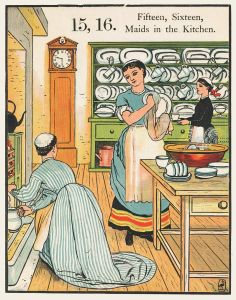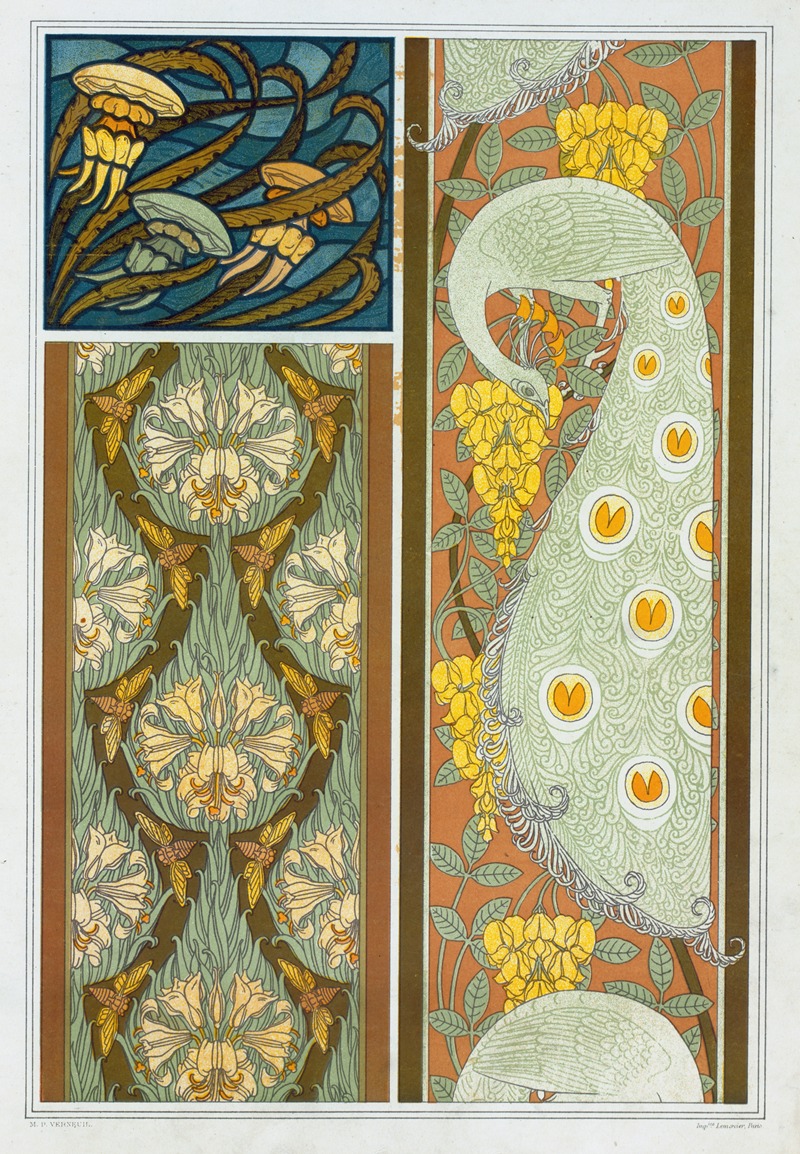
Méduses et algues, vitrail. Cigales et lis, paons et cytise, bordures.
A hand-painted replica of Maurice Pillard Verneuil’s masterpiece Méduses et algues, vitrail. Cigales et lis, paons et cytise, bordures., meticulously crafted by professional artists to capture the true essence of the original. Each piece is created with museum-quality canvas and rare mineral pigments, carefully painted by experienced artists with delicate brushstrokes and rich, layered colors to perfectly recreate the texture of the original artwork. Unlike machine-printed reproductions, this hand-painted version brings the painting to life, infused with the artist’s emotions and skill in every stroke. Whether for personal collection or home decoration, it instantly elevates the artistic atmosphere of any space.
Maurice Pillard Verneuil was a notable French artist and designer, recognized for his contributions to the Art Nouveau movement. His work often featured intricate patterns and a strong emphasis on natural forms, which was characteristic of the Art Nouveau style. One of his creations, "Méduses et algues, vitrail. Cigales et lis, paons et cytise, bordures," exemplifies his artistic approach and thematic interests.
This particular piece is a stained glass design, which translates to "Jellyfish and Seaweed, Stained Glass. Cicadas and Lilies, Peacocks and Laburnum, Borders." The title itself provides insight into the motifs Verneuil chose to explore, highlighting his fascination with both marine and terrestrial life. The use of jellyfish and seaweed suggests an inspiration drawn from the ocean, while cicadas, lilies, peacocks, and laburnum indicate a connection to the land, showcasing a diverse range of flora and fauna.
Verneuil's work is characterized by its detailed and stylized representation of natural elements. In "Méduses et algues," the depiction of jellyfish and seaweed likely involves flowing lines and organic shapes, capturing the fluidity and movement of underwater life. Similarly, the inclusion of cicadas and lilies would reflect his ability to translate the delicate and intricate aspects of these subjects into a cohesive design. Peacocks, known for their vibrant plumage, and laburnum, with its cascading yellow flowers, would add a rich color palette and dynamic visual interest to the composition.
The use of stained glass as a medium is significant, as it allows for the interplay of light and color, enhancing the visual impact of the design. Stained glass was a popular medium during the Art Nouveau period, as it aligned with the movement's emphasis on craftsmanship and the integration of art into everyday life. Verneuil's choice to work in this medium demonstrates his commitment to these principles and his desire to create art that was both beautiful and functional.
Maurice Pillard Verneuil's contributions to the Art Nouveau movement extend beyond his stained glass designs. He was also known for his work in graphic design, textiles, and ceramics, often collaborating with other artists and designers of his time. His ability to blend natural motifs with decorative elements made his work highly sought after and influential in the development of early 20th-century design.
While specific details about the creation and history of "Méduses et algues, vitrail. Cigales et lis, paons et cytise, bordures" may not be extensively documented, the piece remains an example of Verneuil's artistic vision and his role in the Art Nouveau movement. His work continues to be appreciated for its beauty, craftsmanship, and the way it captures the essence of the natural world through the lens of artistic expression.





